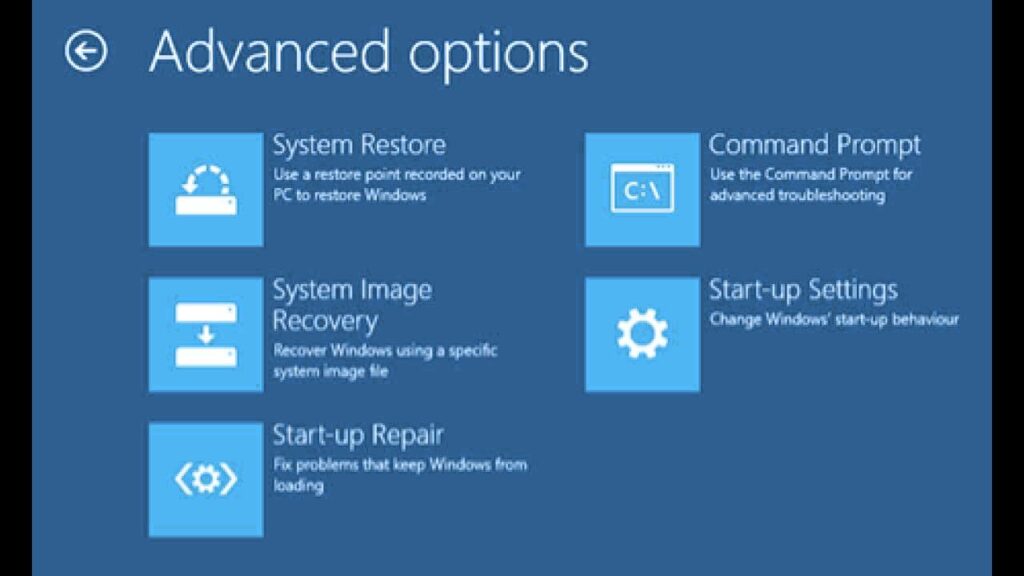How to troubleshoot startup problems in Windows 8

Troubleshooting startup problems in Windows 8 is essential for ensuring that your computer boots up correctly and operates smoothly. Startup issues can occur due to various reasons, such as hardware malfunctions, software conflicts, corrupt system files, or incorrect configuration settings. In this extensive guide, we’ll explore everything you need to know about troubleshooting startup problems in Windows 8, from identifying common issues to using built-in tools and techniques to resolve them effectively.
Understanding Startup Problems:
Startup problems in Windows 8 can manifest in different ways, including:
- Boot Failure: Your computer may fail to boot into Windows 8, displaying error messages or freezing during the boot process.
- Blue Screen of Death (BSOD): You may encounter a blue screen error with a stop code indicating a critical system error.
- Slow Boot: Your computer may take longer than usual to boot into Windows, with the system appearing sluggish or unresponsive.
Identifying Common Causes:
Startup problems in Windows 8 can be caused by various factors, including:
- Hardware Issues: Faulty hardware components such as hard drives, RAM modules, or motherboards can cause startup problems.
- Software Conflicts: Incompatible or corrupt software, drivers, or updates can lead to startup issues.
- Corrupt System Files: Corrupted or missing system files can prevent Windows 8 from booting up properly.
- Incorrect BIOS Settings: Incorrect BIOS settings, such as boot order or hardware configurations, can interfere with the startup process.
Troubleshooting Steps:
To troubleshoot startup problems in Windows 8, follow these steps:
- Safe Mode: Boot into Safe Mode by pressing the F8 key during startup or using the Advanced Startup Options menu. Safe Mode allows you to boot into Windows with a minimal set of drivers and services, making it easier to diagnose and fix issues.
- Startup Repair: Use the Startup Repair tool to automatically diagnose and repair common startup problems. You can access Startup Repair from the Advanced Startup Options menu or by booting from a Windows installation disc or USB drive.
- System Restore: If you recently installed software or drivers that may be causing startup issues, use System Restore to revert your computer to a previous state. You can access System Restore from the Advanced Startup Options menu.
- Check Disk: Run the Check Disk utility to scan and repair disk errors that may be causing startup problems. Open Command Prompt from the Advanced Startup Options menu and run the command “chkdsk /f /r” to check and repair disk errors.
- SFC Scan: Run the System File Checker (SFC) tool to scan for and repair corrupted system files. Open Command Prompt from the Advanced Startup Options menu and run the command “sfc /scannow” to initiate the scan.
- Driver Updates: Update device drivers to ensure compatibility and stability. Use Device Manager to identify outdated or malfunctioning drivers and download the latest versions from the manufacturers’ websites.
- BIOS Settings: Check BIOS settings to ensure that the boot order is correct and that hardware configurations are properly configured. Access the BIOS or UEFI settings by pressing a specific key (such as F2 or Del) during startup.
- Hardware Diagnostics: Run hardware diagnostics to identify and troubleshoot hardware issues. Most computer manufacturers provide built-in diagnostic tools that can be accessed during startup.
Advanced Troubleshooting:
If basic troubleshooting steps fail to resolve startup problems in Windows 8, consider these advanced techniques:
- Reset or Refresh: Use the Reset or Refresh feature in Windows 8 to reinstall the operating system while preserving your personal files and settings. Access these options from the Advanced Startup Options menu.
- Recovery Options: If your computer came with a recovery partition or recovery media, consider using these options to restore your computer to its factory settings.
- Professional Assistance: If you’re unable to resolve startup problems on your own, seek assistance from a professional technician or contact your computer manufacturer for support.
Conclusion:
Troubleshooting startup problems in Windows 8 requires patience, persistence, and a systematic approach to identifying and resolving issues. By following the steps outlined in this guide, you can diagnose common startup problems, use built-in tools and techniques to troubleshoot issues, and restore your computer to a working state. Whether you’re dealing with hardware failures, software conflicts, or corrupt system files, Windows 8 provides the tools and resources you need to diagnose and fix startup problems effectively, ensuring that your computer boots up correctly and operates smoothly.




